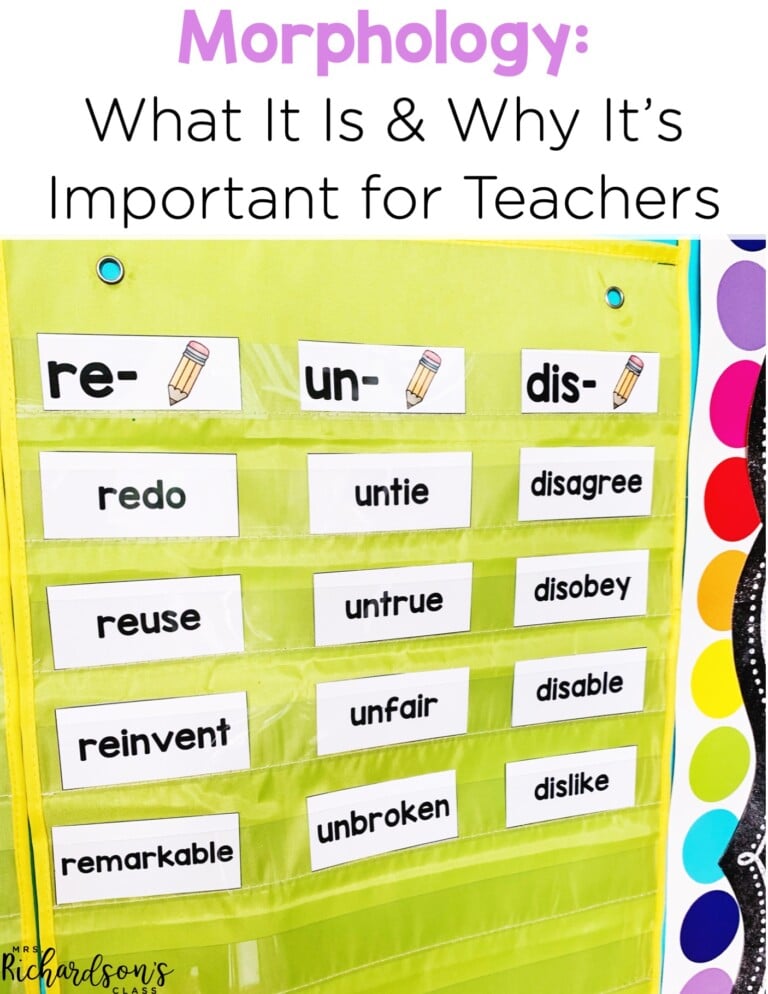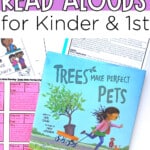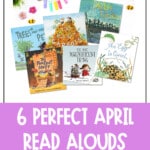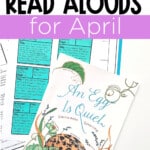

While the month of April may not feel as packed with fun holidays as some months, there are still a lot of holidays and themes we can bring into the classroom to integrate into science and social studies. There’s spring, Earth Day, and Easter (even if it’s in the form of bunnies and chicks). One way to easily keep students engaged is to bring science, social studies, and holidays to your read alouds! There are lots of great books you can use for April read alouds.
Besides student engagement, read alouds are fantastic for teaching new reading skills and strategies and giving students authentic opportunities to practice these skills and strategies. Today I’m sharing six books I love to use for April read alouds. They have strong content, great vocabulary, and easily lend themselves to teaching reading strategies to build strong comprehension skills.
*Amazon affiliate links are used below for the books at no cost to you. This supports the blog so that I can continue to deliver free content.
One of the most important things to keep in mind is that planning your read aloud lesson is as important as delivering the lesson. There are three basic steps to planning a lesson:
I went into great detail on each of these steps of how to plan an effective lesson on my blog HERE.
These books are great for April because they fit into fun spring themes and holidays like Earth Day, spring, and Easter. I also love how these books making teaching reading skills and strategies easy and have great vocabulary!
The Perfect Nest
In this book, a hungry cat builds a nest to attract the perfect chicken to make an omelet, but he gets more than he bargained for! This fun-filled book, The Perfect Nest, will have your students laughing, and you can have them work on making predictions!
Too Many Carrots
This book, Too Many Carrots, easily lends itself to teaching students to visualize! It’s about a rabbit who has too many carrots and doesn’t want to scale back. Trouble happens when his friends try to step in and help!
The Most Magnificent Thing
In this book, a little girl is determined to make the most magnificent thing. She experiences lots of setbacks and gets frustrated enough to think about quitting. The Most Magnificent Thing is great to help teach students to make connections.
An Egg is Quiet
This nonfiction book, An Egg is Quiet, is all about how different eggs are the perfect home for the animals they grow. I like to use this book to teach and practice synthesizing. If you cover eggs and nests in science, this is a great read aloud companion!
Ada’s Violin
This is another great nonfiction book! Ada’s Violin is about a community that lives near a landfill and works to recycle items into instruments. Because of all of the information packed into this book, it easily lends itself to helping you teach students to ask questions while reading.
Trees Make Perfect Pets
This is a great book to use in April because it goes well with Earth day! In Trees Make Perfect Pets, a girl picks an unlikely pet – a tree! I like to use this book to teach and practice synthesizing with my students.
If you want read aloud lessons ready written for you, with activities planned out and ready to go, I can help. I put together everything you’ll need for lessons in the April Read Alouds resource. Each book has a full lesson plan with objectives, vocabulary to introduce, direct explanation, modeling, guided practice, and closure components. I guide you through the entire lesson!
I also included vocabulary cards and a vocabulary activity for each book. Because vocabulary is one of the Five Pillars of Reading, I wanted to provide you with plenty of opportunities to reinforce new words.
One of the most favored components of teachers who already use this resource is the printable sticky notes. Not only do you have a full, detailed lesson plan, but you have printable sticky notes to put inside your book with teaching points already written for you.
April Read Alouds has seven lesson plans that help reinforce skills like making predictions, making connections, questioning, visualizing, and synthesizing. Everything you need for read alouds all in one place!
Be sure to grab your resource today to take planning read alouds off your plate!

Want to use the latest research to boost your readers during small groups? This FREE guide is packed with engaging ideas to help them grow!

I’m a K-1 teacher who is passionate about making lessons your students love and that are easy to implement for teachers. Helping teachers like you navigate their way through their literacy block brings me great joy. I am a lifelong learner who loves staying on top of current literacy learning and practices. Here, you’ll find the tools you need to move your K-2 students forward!


| Cookie | Duration | Description |
|---|---|---|
| cookielawinfo-checkbox-analytics | 11 months | This cookie is set by GDPR Cookie Consent plugin. The cookie is used to store the user consent for the cookies in the category "Analytics". |
| cookielawinfo-checkbox-functional | 11 months | The cookie is set by GDPR cookie consent to record the user consent for the cookies in the category "Functional". |
| cookielawinfo-checkbox-necessary | 11 months | This cookie is set by GDPR Cookie Consent plugin. The cookies is used to store the user consent for the cookies in the category "Necessary". |
| cookielawinfo-checkbox-others | 11 months | This cookie is set by GDPR Cookie Consent plugin. The cookie is used to store the user consent for the cookies in the category "Other. |
| cookielawinfo-checkbox-performance | 11 months | This cookie is set by GDPR Cookie Consent plugin. The cookie is used to store the user consent for the cookies in the category "Performance". |
| viewed_cookie_policy | 11 months | The cookie is set by the GDPR Cookie Consent plugin and is used to store whether or not user has consented to the use of cookies. It does not store any personal data. |


